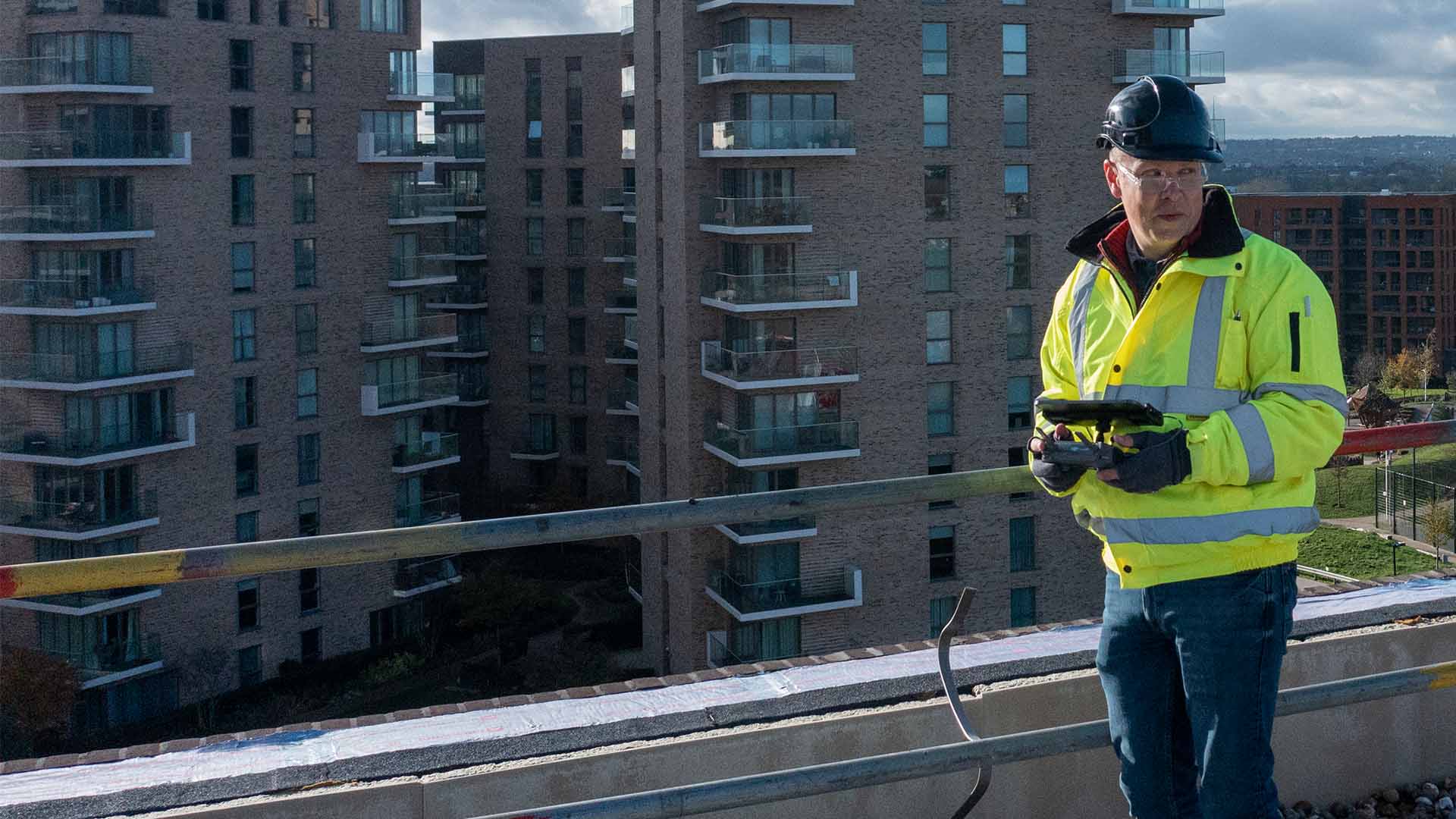Read Time 10 mins
17/04/2023

Introduction
In recent years, drones have revolutionized various industries, and construction is no exception. Equipped with advanced imaging capabilities and automation features, drones are transforming the way construction sites are monitored and managed. As construction projects become more complex and time-sensitive, effective site monitoring is crucial to ensure timely completion, cost-efficiency, and adherence to safety standards. In this blog post, we will explore the benefits of using drones to monitor construction site progress and provide recommendations on the frequency of drone-based monitoring to optimize project outcomes.
Benefits of Using Drones for Construction Site Monitoring
Enhanced Safety and Risk Mitigation
Remote monitoring to reduce on-site hazards: Drones allow for remote monitoring of construction sites, reducing the need for personnel to access potentially dangerous areas. This minimizes the risk of accidents and ensures the safety of workers.
Early detection of potential safety risks: Drones equipped with advanced sensors can detect potential safety risks, such as structural issues or equipment malfunctions, before they become critical. This enables construction teams to address problems early and maintain a safe work environment.
Improved Efficiency and Productivity
Rapid data collection and analysis: Drones can quickly gather large amounts of data from a construction site, including images, videos, and topographical information. This rapid data collection enables faster analysis and decision-making, contributing to improved project efficiency.
Streamlined communication and collaboration: By providing real-time, accurate information, drones can improve communication and collaboration among different teams working on a construction project. This helps ensure everyone is on the same page, reducing delays and misunderstandings.
Accurate and Comprehensive Data Collection
High-resolution imagery and mapping: Drones equipped with high-resolution cameras can capture detailed images of construction sites, allowing for precise mapping and progress tracking. This data can be used to create visual reports and identify areas that require attention.
3D modelling and digital twins: Using advanced imaging techniques, drones can create 3D models of construction sites, enabling the creation of digital twins. These digital representations provide a comprehensive view of the project, allowing for improved planning and execution.
Reduced Costs and Resource Optimization
Decreased need for manual labour and site visits: Drone monitoring reduces the need for manual inspections and site visits, saving time and labour costs. This allows construction companies to allocate resources more effectively and focus on other critical tasks.
Improved decision-making to save time and money: Drones provide accurate, up-to-date information on construction progress, enabling better decision-making. This can help identify potential issues early, preventing costly delays and rework.
Better Compliance and Documentation
Regular updates for regulatory compliance: Using drones for regular monitoring can help construction companies stay compliant with local and federal regulations. Frequent updates ensure that projects adhere to safety standards and environmental guidelines.
Historical records for future reference: Drone data can be archived and used as historical documentation for future projects or reference. This information can be invaluable for assessing best practices, identifying potential issues, and improving overall project management.
Implementing Drone Monitoring in Your Construction Workflow with Third-Party Drone Operators
Choosing the Right Drone Service Provider
Evaluating drone service capabilities: When selecting a third-party drone service provider for construction site monitoring, it's essential to consider factors such as the company's experience, drone models, flight time, payload capacity, camera quality, and sensor capabilities. Evaluate different providers and choose one that meets your project's specific requirements and budget.
Selecting a provider with suitable data analysis and reporting software: To make the most of drone-generated data, ensure your chosen drone service provider offers reliable software that can process, analyse, and present the information in a user-friendly manner. Consider providers that offer features such as 3D modelling, progress tracking, and seamless integration with your existing project management tools.
Verifying Third-Party Drone Operator Certification and Training
Ensuring CAA certification: Make sure that the drone service provider employs certified operators who have a solid understanding of drone regulations and airspace restrictions.
Confirming adherence to industry best practices: In addition to obtaining CAA certification, it's crucial to ensure that your chosen drone service provider follows industry best practices in drone operation, safety protocols, and specific techniques relevant to construction site monitoring.
Integrating Third-Party Drones into Existing Processes
Coordinating with site managers and staff: Effective communication and coordination between third-party drone operators, site managers, and other staff members are crucial for successful drone integration. Make sure everyone is aware of the drone's purpose, flight schedules, and safety procedures.
Establishing clear protocols and procedures with the drone service provider: Work closely with your chosen drone service provider to develop a set of standard operating procedures for drone use on your construction sites. These procedures should address pre-flight checks, flight planning, data collection and processing, reporting, and post-flight procedures. Having clear guidelines in place will ensure consistent and efficient drone usage across your projects.
Conclusion
In summary, drone monitoring offers numerous benefits for construction site management, including enhanced safety and risk mitigation, improved efficiency and productivity, accurate and comprehensive data collection, reduced costs and resource optimization, and better compliance and documentation. By employing drone technology, either through in-house operations or third-party service providers, construction companies can significantly improve their project outcomes and ensure a safer working environment.
Embracing drone technology has the potential to revolutionize construction site progress and safety, providing real-time insights and valuable data for project management. As the construction industry continues to evolve and grow, leveraging drone monitoring can give your projects a competitive edge, enabling you to deliver high-quality results on time and within budget. Don't hesitate to explore the potential of drone technology and discover how it can transform your construction workflow for the better.